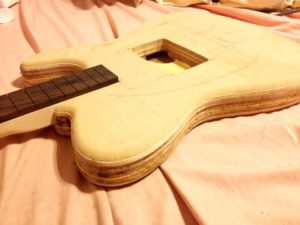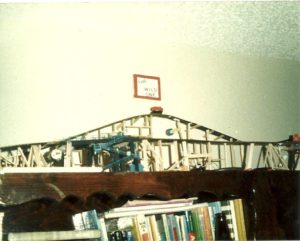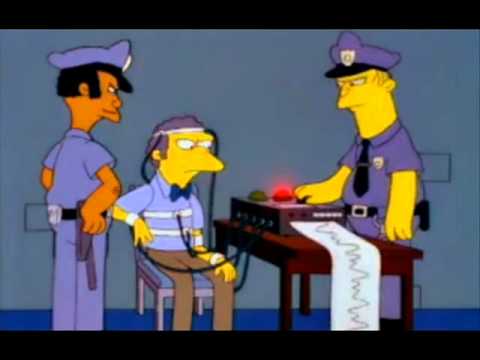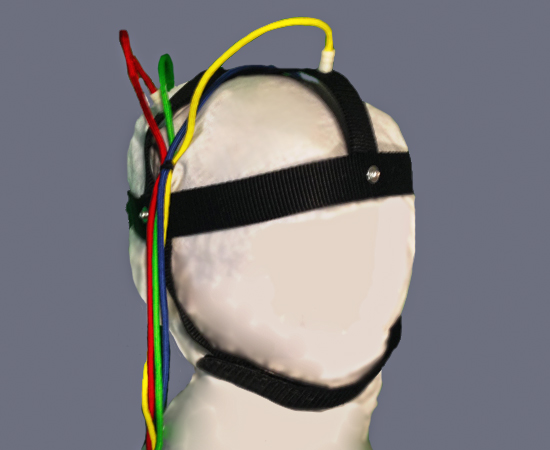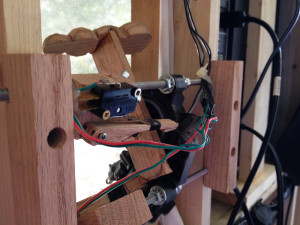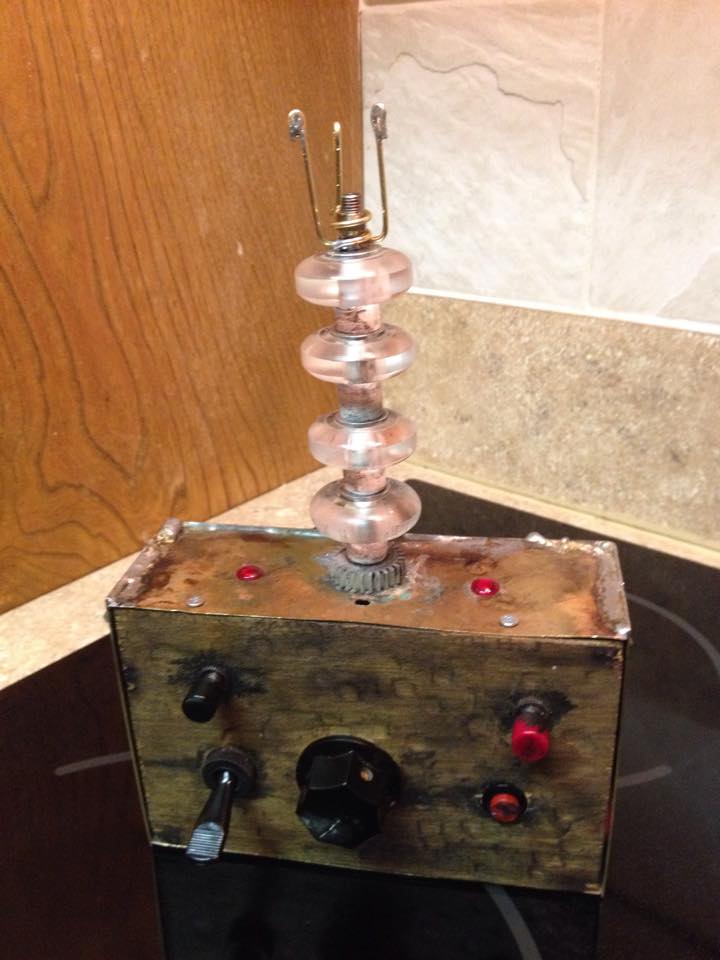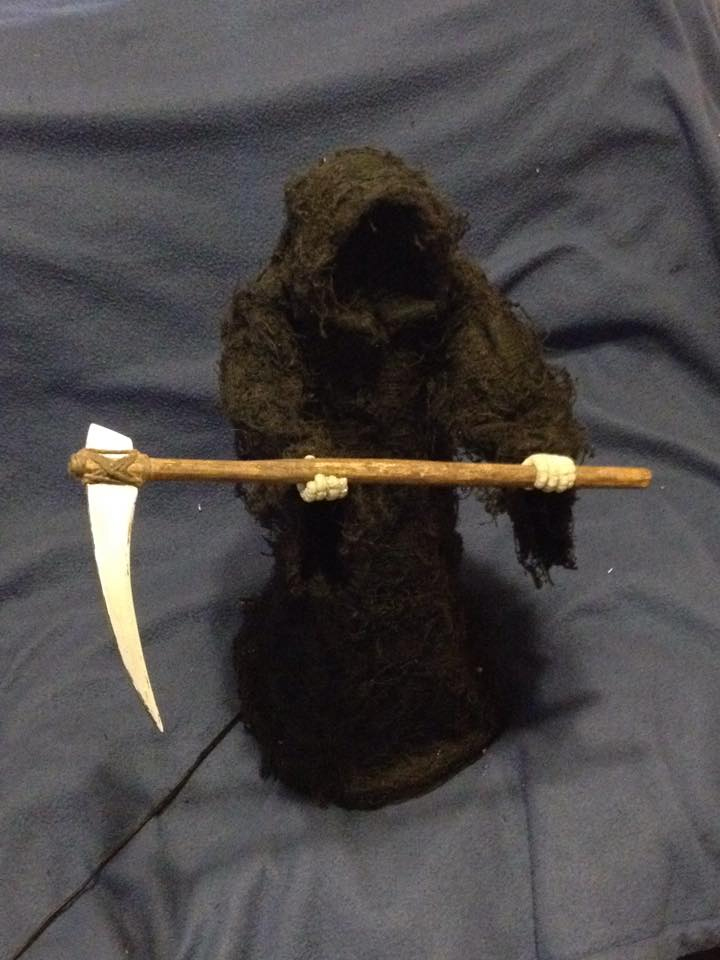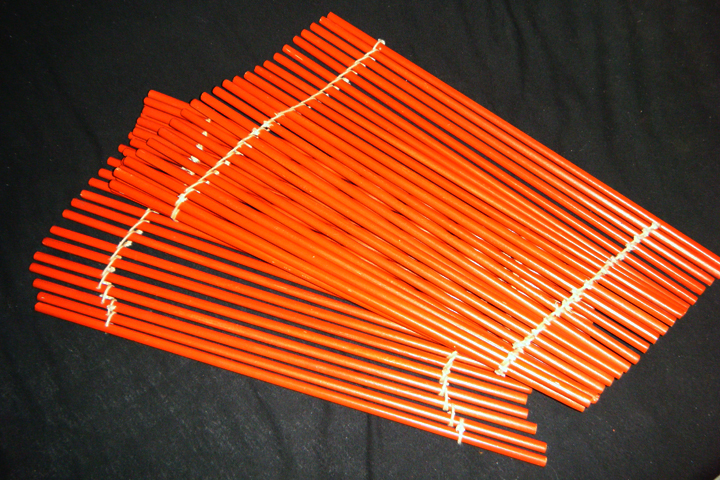I recently rescued a MAK Magic French Arm Chopper from an attic, where it was rotting away and getting eaten by rodents. I fixed the broken pieces and gave the whole thing a new look. In doing that, I used a wood graining tool to do faux wood grain, and that’s what this post is really about.
If you look at the overall effect that the wood grain has, you will see that it looks real, but at the same time, it looks slightly off giving it a cartoon feel. It looks like some kind of decoration you would see at an amusement park, and that was done on purpose to take the edge off the macabre nature of the piece. There is a formula on how to give it that look, and how to make it look 100% real. This is the story of brown.
First thing to do, is to define what exactly what I am talking about. When I say color, I am referring to pigments, not light. For example, we all know that a prism will break up white light into the rainbow spectrum, and if you shine gelled spot lights of color onto one area, it will go white again, that’s the color of light, and that’s not what I am talking about. I am talking about pigments and the reflection of light. If you mix all the colors of pigments together, it doesn’t go back to white, like light does. It goes to.. well that’s what we are going to talk about. The reflection of light, as in pigments, and not the light itself or any filtering of light.
Starting with the basics… You have your primary colors. Red, Blue, and Yellow. You can not create those colors from any other colors. Next, you have secondary colors that come from mixing the primary colors. Red and Blue make Violet, Blue and Yellow make Green, and Yellow and Red make Orange. If you mix all the primary colors together you get???? White? No… Black? No… You get brown. Black and White are your primary shades, gray is your secondary shade, a mixture of black and white. You can not get a shade from a color, and you can not get a color from a shade.
![]()
If you look at the range of each secondary color, you can see the secondary colors fall on a spectrum between the primary colors. An orange can be a reddish orange, a yellowish orange, or mid range. Just like the violet can be more reddish, or more blue, and one of those is called purple. The same with the green, it can be yellowish or blueish. But when it comes to brown, a mixture of all the colors, the gamut of the brown can favor any of the primary colors, and since it’s also a mixture of primary colors to make secondary colors, brown can favor any secondary color as well. In other words, there can be a reddish brown, an orangeish brown, yellowish brown, greenish brown, blueish brown, and violet-ish brown, or whatever you want to call it, or an even mixture of them all.

Believe it or not, but colors have opposites, and they follow the brown color formula. Brown is the mixture of all primary colors, but it can also be looked at as one primary and one secondary color, which is the other two primary colors. Red and Green will make brown. That’s because green is yellow and blue. Same goes for Yellow and Violet, and Blue and Orange. They will all make brown, and they are also the opposites of each other. Notice how they fall directly across from each other. Red and Green are opposites, Blue and Orange are opposites, and Violet and Yellow are opposites. You can also test this. Take a white piece of paper, hold up a smaller colored piece of paper in front of it, stare for a minute or so, then remove the colored paper. For a split second or two, you will see the opposite color. That’s how those black and white pictures that look like color for a little while work. Notice the sky color is orange, and what’s its opposite? Blue. That’s a primary color, so it’s opposite will be a mixture of the other two primary colors, yellow and red, which make orange.
So why am I telling you all this? Well, if you notice, the color of wood is brown. That’s why, and if you want to give the wood grain that cartoon feel to it, use opposite colors of brown as the two colors that make up your wood grain. It’s as simple as that. In the real world, or as least as we see it, wood doesn’t come in opposite colors. If you want the wood grain to look 100% real, use different shades of the same color of brown, or don’t venture far from the spectrum, but this is about the cartoon look. You can use blue and orange browns, or violet and yellow browns. If you use them, Make the darker colors, blue or violet, as the dark base color, and their opposites as the lighter top coat of grain. If you use red and green, it really doesn’t matter which is the darker color and which is the lighter. Both are normal wood colors. Most wood either has a greenish tint or a reddish tint. Like cedar, it’s very red, where as wood that grows nuts is very green.
I chose blue and orange as the colors of brown for my arm chopper. I took some simple acrylic brown pain that was as much as the middle of the road I could find, and then mixed some blue into it. The idea was to get it a blueish brown, and not a brownish blue. It should just have a hint of blue to it. Any other darkening comes from black, which only changes the shade, not the color. Once I achieved my blueish brown color, I painted everything that was going to get the wood grain. I did orientate the brush strokes to the direction the grain was going to go.
Once that dries, it’s time to do the actual wood graining. You will need a wood graining tool. I got mine at Lowes. They have them some times, but you can just google them, and you will find several different types. The actual one I use is called the “Plaid Wood Grainer – 30114”.
For the top coat of paint, I went with the opposite of my blueish brown. I took my middle of the road brown and this time I added orange into it, and some white to lighten it up. I created a light orangeish brown color. I won’t go into technique of using the tool. There are plenty of resources for that. I am just teaching what colors of brown to use. But the way I do it, is to paint the tool with a thick coat, run the tool across the wood, and keep doing it until I get a pattern I like. Different movements cause different patterns, and you have a few chances to get it right before the paint dries. So move fast and keep trying.
Once everything is dry, it’s time for some detail. This is the fun part, because you get to see it come to life. At this point, I take a small artist paint brush and paint black lines dividing up all the different pieces of wood. I also added any cracks, knots, or dark spots I want. Then I water down the black paint a little and create a wash. I go over my black lines which blurs them out and makes them not so harsh. I also use it to dirty up the wood. If you water it down too much so it barely shows up, that’s fine. You want to do this very light, and build up the darkness. It keeps you from messing up, it allows you to see where it’s going, and it makes it easier. It takes longer, but this is the fun part, so who cares? Keep going over and over until it looks good.
After the graining work is all done, all the detail is done, it needs to be finished off with a clear coat. This does several things. For one, it protects the art work. Imagine if you will, that I came to your home, and wood grained an entire illusion for you at no charge. As I leave, after doing all that work, I say, “now go get a clear coat to put over it”… If that happened, you would probably do it. Right? Yeah, I agree. It’s pretty stupid not to. If I did that for someone, that person should listen to me.. but I digress…
I like to use a matte finish. A clear coat on the grain is like putting a magnifying glass coat on it. Everything pops. It’s night and day. If you think the wood grain looks good, wait until you see it after the clear coat. And if you use a matte finish, you don’t have to worry about glares from stage lights. A clear coat is a must.
So in conclusion… Brown is a mixture of all primary colors. Colors have opposites based on the brown spectrum. Use opposite colors for a cartoon look and like colors for realistic look. Always clear coat.






